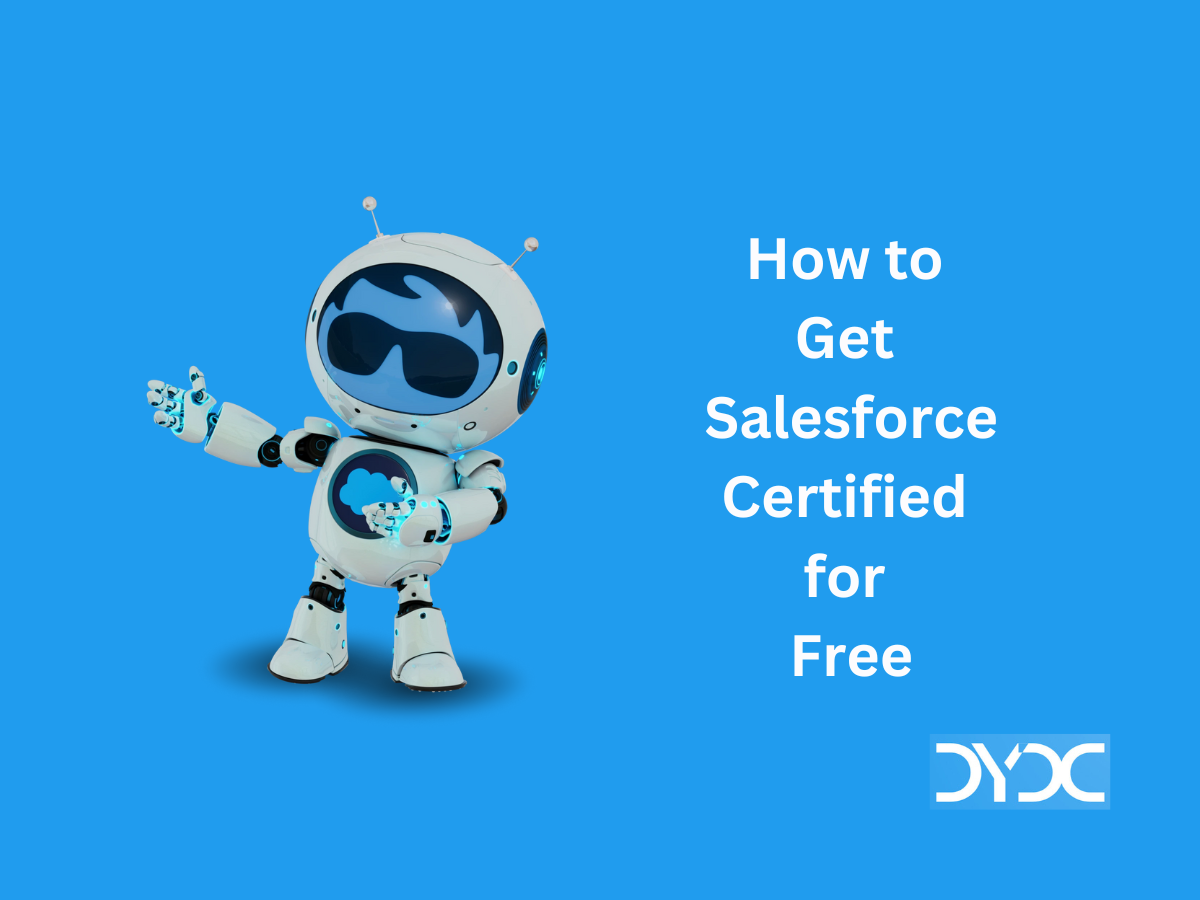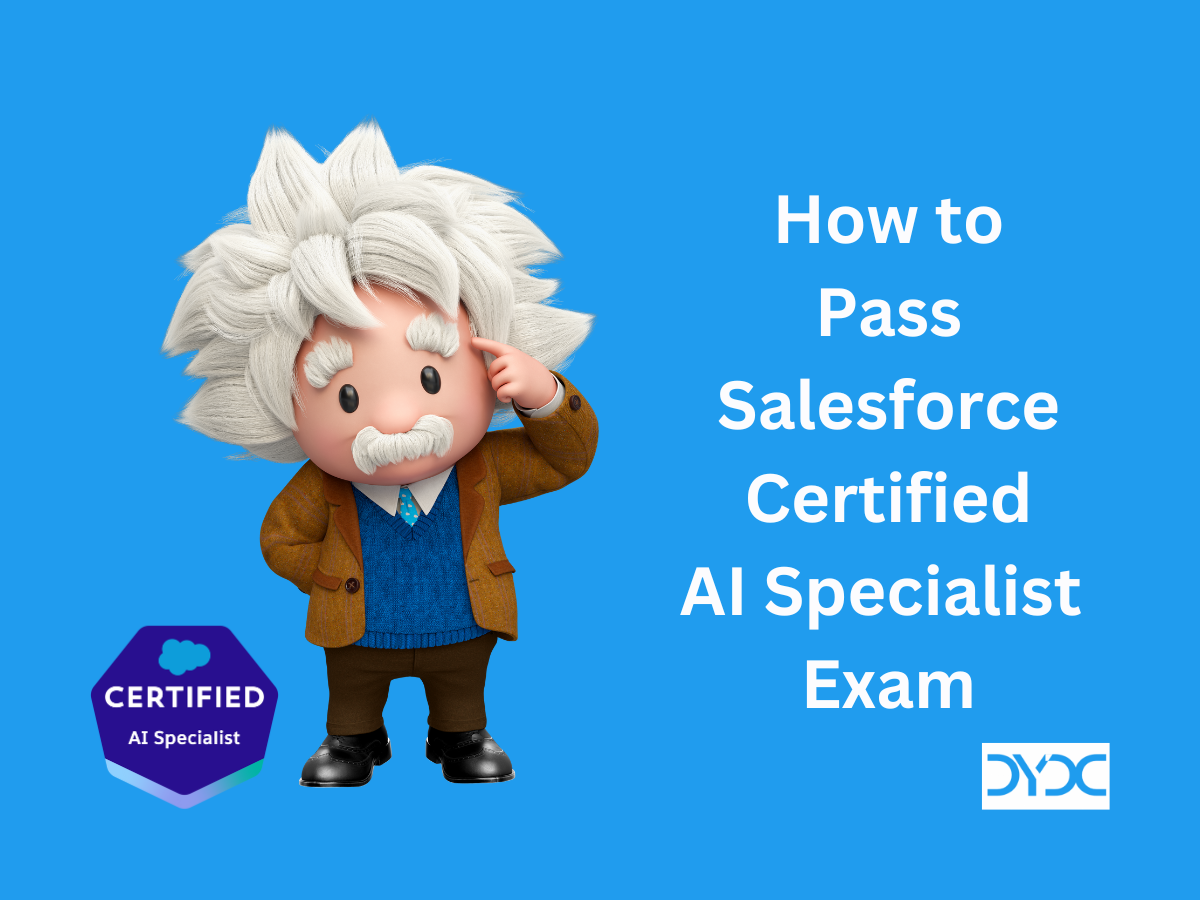Salesforce Certified Pardot Specialist Exam Guide.
1. About the Pardot Specialist Certification Exam
The Salesforce Certified Pardot Specialist credential is designed for individuals who would like to demonstrate their skills and knowledge in designing and building marketing campaigns within Pardot.
- Content: 60 scored, multiple-choice/multiple-select questions and up to 5 non-scored questions
- Time allotted to complete the exam: 90 minutes (one of the lowest)
- Passing score: 72% (44 out of 60 Questions, one of the highest)
- Registration fee: USD 200, plus applicable taxes as required per local law
- Retake fee: USD 100, plus applicable taxes as required per local law
- Prerequisite: None
2. Pardot Specialist Certification Exam Outline
Visitors and Prospects: 8%
- Describe the relationship between visitors and prospects.
- Given a scenario, apply the appropriate plan of action using Prospect Audits.
Administration: 11%
- Illustrate how to create, edit, and map fields.
- Explain the relationship between Pardot and Salesforce.
- Describe the capabilities of the Pardot Recycle Bin.
Pardot Forms, Form Handlers and Landing Pages: 20%
- Given a scenario, identify the capabilities, use cases and interpret metrics of Pardot forms.
- Identify the capabilities, use cases and interpret reporting metrics for landing pages.
Lead Management: 24%
- Explain the components and use cases of an automation rule.
- Distinguish between the capabilities of, use cases for, and how to create different types of lists.
- Define the capabilities of a completion action.
- Define the capabilities of a segmentation rule.
- Define the capabilities of page actions.
- Explain what a Score measures and how scoring is managed.
- Explain what a Grade measures and how grading is managed.
- Identify the capabilities and use cases of custom redirects.
Email Marketing: 20%
- Distinguish between an Email and an Email Template.
- Given a scenario, identify the capabilities and use cases for email.
- Distinguish between the metrics collected in Pardot email reporting.
Engagement Studio: 17%
- Distinguish between the components of an engagement program.
- Explain the process of updating an engagement program including its assets.
3. Pardot Specialist Certification Exam Guide
4. Pardot Specialist Certification Exam Trailmix
5. Important Topics for Pardot Specialist Certification Exam
5.1. Visitors and Prospects: 8% (5 Questions)
- Sign up for a Pardot Developer Org here!
- Pardot Lead Generation for Pardot Lightning App
- Two types of cookies set by Pardot are:
- Visitor Cookie – visitor_id
- Opt In Cookie – pi_opt_in
- Prospects can be created by following three ways:
- A Pardot form you embed on your web page.
- A form on your site that you connect to a Pardot form handler.
- A form you host on a Pardot landing page.
- Prospect Audits – Audits for field changes are stored for 30 days
- Pardot uses two metrics for lead qualification
- Prospect score
- Prospect grade
- Difference Between Pardot Campaigns and Lists
- Pardot campaigns are prospects grouped together for tracking and reporting purposes
- Pardot lists are prospects grouped together to make it easier to email marketing materials to them as a group
- Pardot campaign maintains a 1:1 relationship between itself and the prospect. In contrast, Salesforce campaigns allow leads and contacts to be tied to multiple campaigns at the same time, supporting multiple interactions.
- Pardot form – collect information about people visiting your website or landing page
- Progressive Profiling – displays new fields based on fields that a prospect completed on previous forms
- Form handlers connect Pardot to your external forms so that you can send the relevant prospect information into Pardot
- A landing page is a specific web page that a visitor typically reaches after clicking a link or advertisement
Pardot sets a following kinds of cookies.
| NAME | DETAILS |
|---|---|
| visitor_id<accountid> | The visitor cookie includes a unique visitor ID and the unique identifier for your account. |
| pi_opt_in<accountid> | If Tracking Opt-in preferences is enabled, the pi_opt_in cookie is set with a true or false value when the visitor opts in or out of tracking. If a visitor opts in, the value is set to true, and the visitor is cookied and tracked. If the visitor opts out or ignores the opt-in banner, the opt-in cookie value is set to false. The visitor cookie is disabled, and the visitor is not tracked. |
| visitor_id<accountid>-hash | The visitor hash cookie contains the account ID and stores a unique hash. |
| lpv<accountid> | This LPV cookie is set to keep Pardot from tracking multiple page views on a single asset over a 30-minute session. |
| pardot | A session cookie named pardot is set in your browser while you’re logged in to Pardot as a user or when a visitor accesses a form, landing page, or page with Pardot tracking code. The cookie denotes an active session and isn’t used for tracking. |
- An anonymous visitor is someone who has visited a page with your Pardot tracking code on it, but hasn’t converted to a prospect yet. Prospects are visitors who have an associated email address in Pardot.
- An active prospect has performed an activity, such as submitting a form, visiting a page, or clicking a link. Active prospects have a green person icon next to their name. A prospect who has never been active has a red person icon.
- The value in a prospect’s source field is determined by the referring URL. The referring URL is the page the visitor was on prior to visiting a page with Pardot tracking code for the first time. Pardot pulls in source data when the referring URL is present and matches up with the expected website for a given vendor.
- When you delete a prospect, the record is moved to the recycle bin. From the recycle bin, you can restore the prospect or permanently delete the record at any time. Deleting a prospect in Pardot does not delete the record it’s syncing with in Salesforce.
- You can merge up to three prospects at once and select one to be the primary. When merged, the activities of the merged prospects are aggregated, and Pardot recalculates the primary prospect’s score. Non-primary prospects are permanently deleted and do not go to the recycle bin.
- You can export/import prospects in .csv format.
- Prospect accounts group prospects that work for the same company under the same umbrella.
5.2. Administration: 11% (7 Questions)
- Pardot Salesforce Integration for Lightning App
- Every Pardot account comes with four user roles:
- Administrator
- Marketing User
- Sales Manager
- Sales User
- Recycle Bin
- Tags and content files are deleted permanently and don’t appear in the recycle bin.
- Prospect Fields – Pardot accounts include a set of default prospect fields to gather information. You can also create custom fields to capture information tailored to your needs. You can configure fields globally and on a per-form basis.
- Syncing Prospects Between Pardot and Salesforce – When syncing prospects, changes to prospect records are pushed to Salesforce, and information from Salesforce records is pulled into the corresponding Pardot prospect records. Syncing occurs every 2–4 minutes.
- You can have only one Salesforce connector in Pardot.
- Map Salesforce and Pardot Custom Fields – A Pardot admin can map prospect and account custom fields so that they can sync between Pardot and Salesforce.
- Mapping a Pardot custom field with a Salesforce field does not trigger a sync with the CRM.
5.3. Pardot Forms, Form Handlers and Landing Pages: 20% (12 Questions)
| EXPERIENCE | FEATURES | AVAILABLE IN | SOURCE VALUE |
|---|---|---|---|
| Classic Landing Page Experience | HTML and WYSIWYG editors, scripting and custom CSS, merge field picker, Pardot reporting | Pardot Classic and Pardot Lightning App | Pardot |
| Enhanced Landing Page Experience | Drag-and-drop builder, responsive design, Salesforce CMS images, Salesforce reporting | Pardot Lightning App | Salesforce |
- Lead Generation with Forms and Form Handlers
- Form and Form Handler Reporting
- Landing Page Reports
- Use Engagement History
5.4. Lead Management: 24% (14 Questions)
- Pardot Process Automation for Pardot Lightning App
- Pardot Scoring and Grading for Pardot Lightning App
- Lead Qualification with Pardot
- Segmentation
- Einstein Behavior Scoring
5.5. Email Marketing: 20% (12 Questions)
- Pardot Email Marketing for Pardot Lightning App
- Email Authentication
- Email Marketing with Pardot
- List Email Report
- Email Template Reports
- B2B Marketing Analytics Dashboards
5.6. Engagement Studio: 17% (10 Questions)
6. Additional Pardot Resources
All the best for your Salesforce Certified Pardot Specialist Exam preparation, happy learning!


